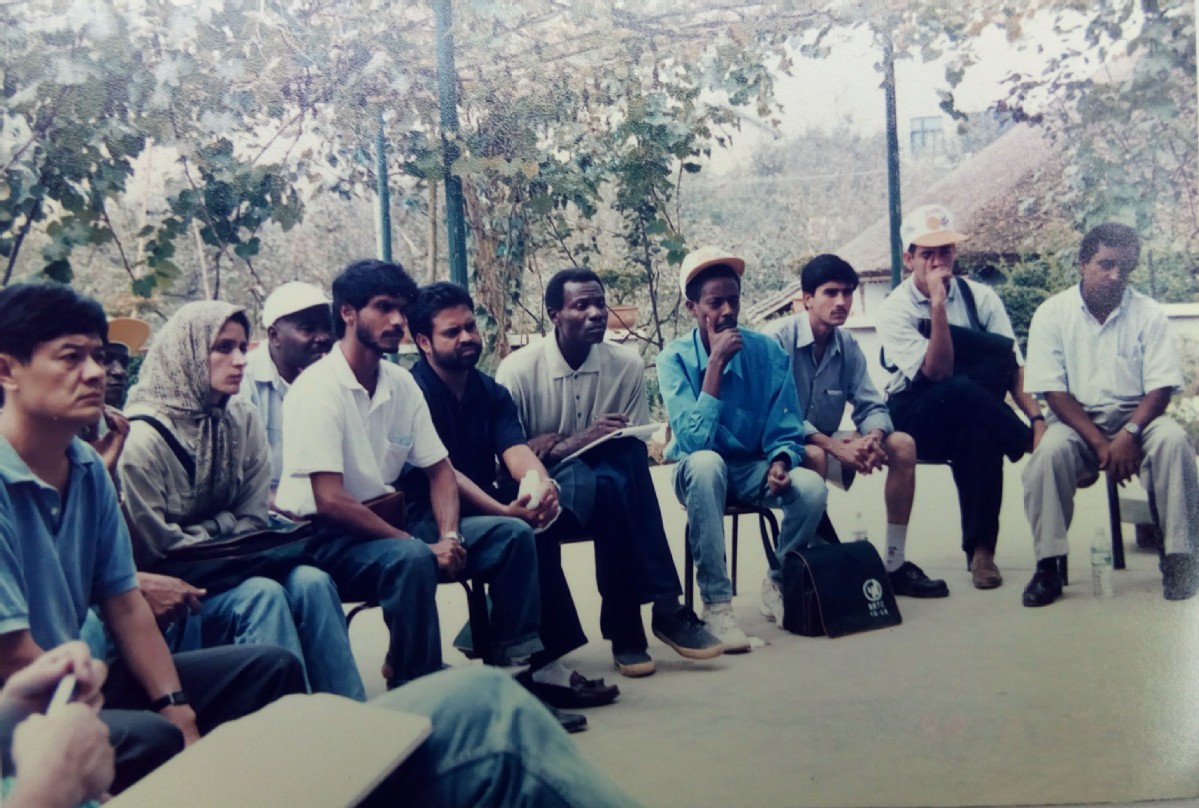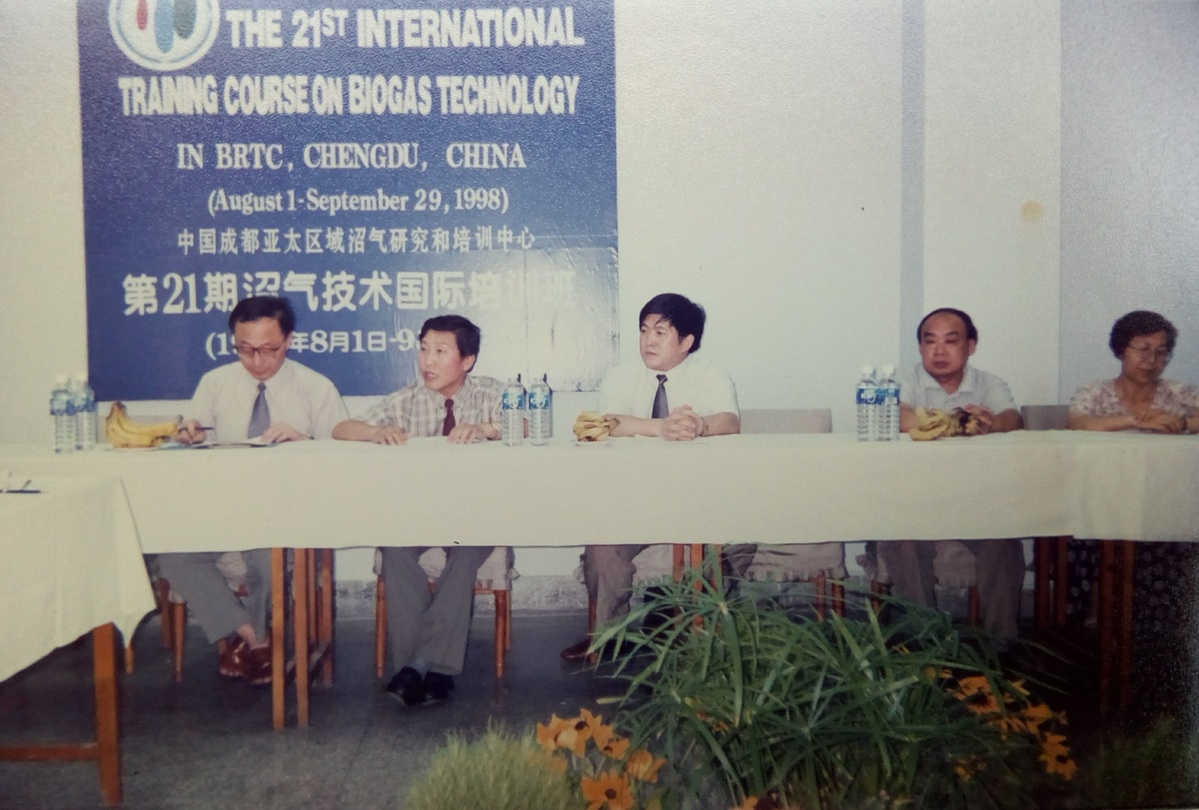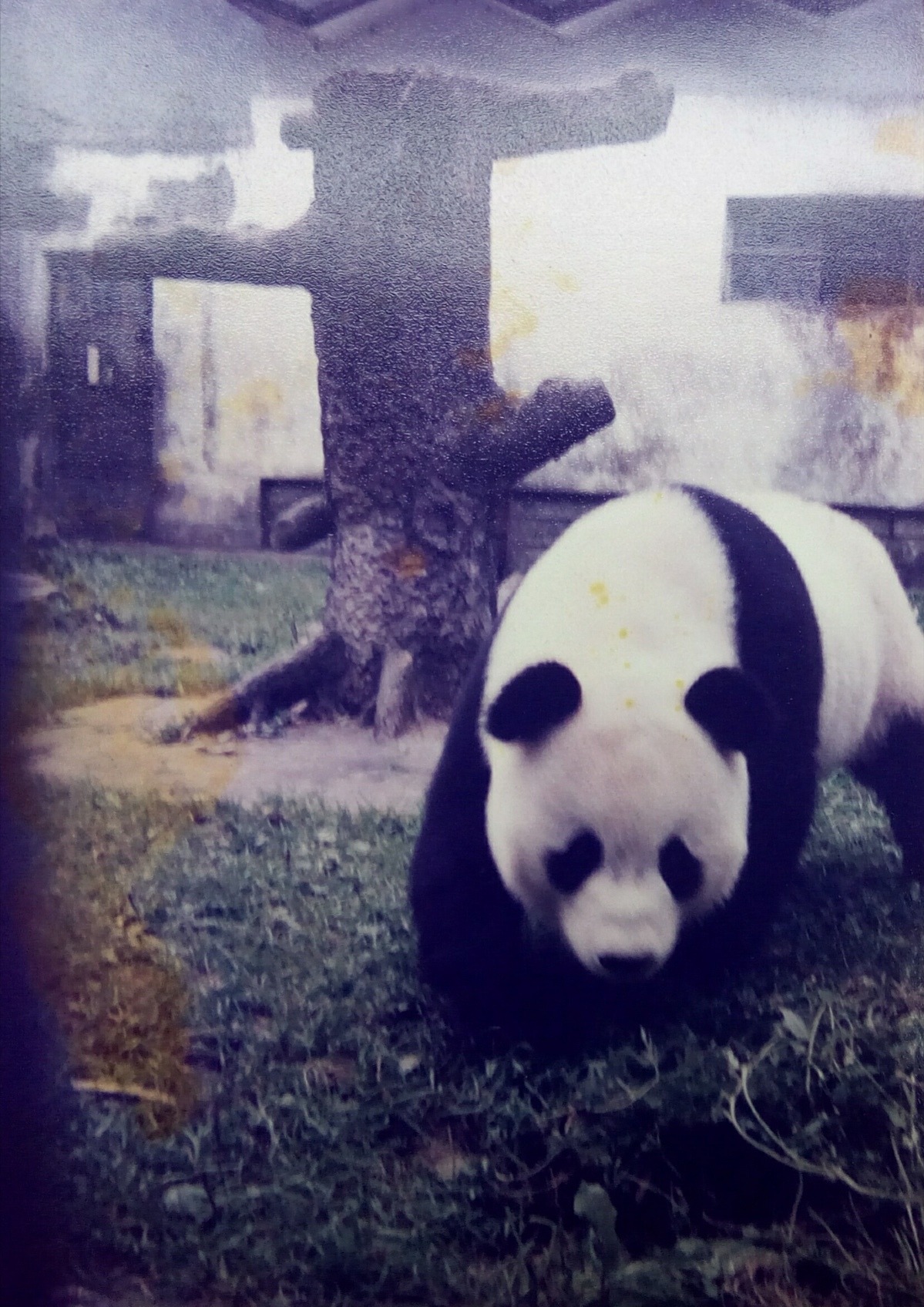Memorable visit to Sichuan 23 years ago
By Palitha Mahinda Munasinghe | chinadaily.com.cn | Updated: 2022-03-02 13:51
I still recall those memorable days of my life in 1998 when I won a scholarship to China, under the United Nations Development Program, which gave me the opportunity to go to the Asia-Pacific Bio-Gas Research and Training Centre at Renmin Nan Lu in Chengdu, the capital of Sichuan province. It was my first visit to China for study. At the time, I had known about China only through books, magazines, and radio and television programs.

The flight took off from Katunayake and landed at Bangkok airport. I walked around for almost three hours in the airport. The next flight was from Bangkok to Chengdu via Kunming. It reached Chengdu after two hours. At the Chengdu airport, I heard several officials speaking enthusiastically about my Sri Lankan nationality. I felt like I was among relatives and friends.

I realized that the genuine diplomatic relations between the two countries from the past were the main reason for that. A distinguished looking person in casual wear came in a car with a young girl to accompany me. He was so friendly and polite. Next morning, I was surprised to see him sitting in the CEO's chair. Later I learned that the girl was his daughter who was studying in a university.
At the opening ceremony on the following day, the chairperson gave us a brief description of China, Sichuan province and its people. After that, his deputy explained our program. The participants of different countries from Asia, Europe, Africa and Latin America introduced themselves in the afternoon. We participated in a number of lectures on biogas production and followed practical sessions on a wide range of usage and utility of biogas in many places of Sichuan province during the program. Within that period, we had the opportunity to visit various places in the province, which was a source of inspiration and delight to all of us and still memorable.
After daily scholastic activities and training sessions, we were able to spend our leisure time freely. I walked along the streets of Chengdu with my friends every evening. I really liked the sincere smiles and friendly, polite conversations of many of the Chinese people we met. The main roads were lined with department stores, streets food and beverage outlets. Chengdu cuisine is one of the eight cuisines popular in Sichuan because of its delicious spiciness. Each dish is flavorful with hot spicy and aromatic nutmeg, pepper and garlic. Kung pao chicken is a classic Sichuan dish, cooked by mixing roasted peanuts, red chilies, pepper, chopped leeks with cubes of chicken.
Sometimes whole families and young couples walked along the roads. The majority of adults focused on exercising and playing cards on the sidewalks nearby. It was a wonderful way to spend the evening. Spending a little time in front of the musicians was a great relaxation for the mind. It was very nice to visit teahouses located inside the People's Park Qingyang district. Sitting in a bamboo chair, sipping a hot cup of tea was an ideal way for observing how Chinese enjoy their life leisurely in Chengdu. In front of the statue of Chairman Mao Zedong in the center of the city a beautiful and colorful flowers were displayed. Municipal workers start their duties at dawn. We saw many people diligently engaged in their hard work, which always seemed to be their slogan.

On a day of the first week in September after breakfast, we all boarded the bus with four of the training staff members and a tour guide. We were able to get out of town for the first time. One hour and forty-five minutes after passing huge highways, bridges, housing complexes, industrial sites and farming area we arrived at Wolong. There is a Giant Panda Reserve Center (China Conservation and Research Center for Giant Panda). Wolong Nature Reserve in the southwest of Wenchuan County lies on the transition area from the Qinghai and Tibet Plateau to the Sichuan Basin. It has favorable climate and suitable conditions for preservation and reproduction of pandas and red pandas, according to officer's description. It adopted strong measures to protect this rare species. From 1991, the panda center had artificially produced giant pandas several times according to its records.
We observed the panda's living habits and conditions during the sightseeing trip to Wolong. I personally understood how Chinese people protect and live in harmony with them. Imagine, you having just one day to stay close to one of the most lovey-dovey creatures. It will be once-in a-lifetime experience even for just a few hours with giant pandas. The keepers feed the pandas twice a day i.e. in the morning and in the afternoon. Pandas are very active during the feeding time. They eat, crawl, and climb trees, playing with partners.
Therefore, it is best to reach there early in the morning to observe the pandas' activities. It is best visiting the place from August to September to see the newborn baby pandas.
At the end of the day, we drove to Friendship Hotel at Chengdu to rest before the next leg of our program. Our tour guide said that it had some walking involved. Early In the morning of that day, our staff members, tour guide and driver picked us up at our hotel in Chengdu around 07:00 am and drove to Leshan. It is 140 km from Chengdu. It took about 2 hour and 15 minutes. There were many attractions around Leshan. However, we only had time to visit Giant Buddha and Emei Mountain.
Leshan Giant Buddha is a World Heritage Site. It is the largest and tallest stone-carved statue of Buddha in the world. Giant Buddha is looking down on the confluence of the Minjiang, Dadu and Qingyi rivers. According to our guide and printed leaflets, it was carved out in the 8th century. Its head reaches the mountaintop and feet stand next to the river. The total height is 71m. While the head is 14.7m high and 10m wide, ear is 7m high, 28m between knees and insteps. Its insteps can hold over a hundred people. Giant Buddha was built to calm down the turbulent waters that plagued passing boats and killed many people each year in ancient times. You have to walk down or travel by boat to the feet of the Giant Buddha for a closer view.
It is the best option to step up Mount Emei after visiting Leshan Giant Buddha. Emei Mountain is located around 34 km from Leshan City. It is just 45 minutes to drive there. We passed five parking lots from Baoguo Temple bus parking lot. We arrived at the Wannian Temple parking lot by our bus to climb the mountain. There was a ticket office. We lined up to check in there and then continued to climb the mountain. The entrance fee for the temples in Mount Emei is not included in the entrance ticket fee for the entire scenic area. Our guide said, “You can't climb the whole mountain and all historical places in one day. This is one of the most famous Buddhist sites in China and as well as the world. Mount Emei is the place where Buddhism was first established in China.
Over 300 Buddhist monks and nuns are living here and about 30 temples do exist. Emei Mountain covers from subtropical evergreen forests to subalpine pine forests within its elevation, range of 2,600m with cultural significance. The biodiversity of the site is exceptionally rich plant species. More than 100 species are endemic and 31 species among them are under national protection.”
I referred to the site map. It showed paths to the top temples such as Baoguo, Fuhu, Wannian, Xianfeng, Xixiang, Huazang, Qingyin Pavilion and Hongchun Buddhist Convent. Top of the mountain is Golden Summit and Golden Buddha. According to the information we received, the number of local and foreign tourists and pilgrims climb Mount Emei were increasing gradually. There was sightseeing bus route from Baoguo bus station to Jieyin Hall and cableway from there to Jingding hotel. There was another cableway from Wannian parking lot to Wannian Temple. It also had well-paved footpath that leads to the Golden Summit of the mountain and low mountain area. We lined up along the platform to travel to the Golden Summit cableway from Jieyin Hall. There were numerous drink stands and souvenir stalls. Emei is one of the four sacred Buddhist Mountains in China. It has a documented history of over 2,000 years and specially protected place for almost 3,000 years.
As the sun was beginning to set, we turned back to our hotel blissfully tired. Those were historical and admirable places to my friends and me. After successfully completing the training program, we all left China with tear-filled eyes. However, the most important thing I saw there was that the 17 countries, whose citizens received the training with me, are still cooperating with China under the belt and road initiative even today, after 23 years.
The author has worked as a farm mechanical instructor over the past 30 years at the Department of Agriculture in Sri Lanka and is a freelance writer for leading National Level (Sinhala) newspapers and magazines in Sri Lanka.
The opinions expressed here are those of the writer and do not necessarily represent the views of China Daily and China Daily website.
If you have a specific expertise, or would like to share your thought about our stories, then send us your writings at opinion@chinadaily.com.cn, and comment@chinadaily.com.cn.
























